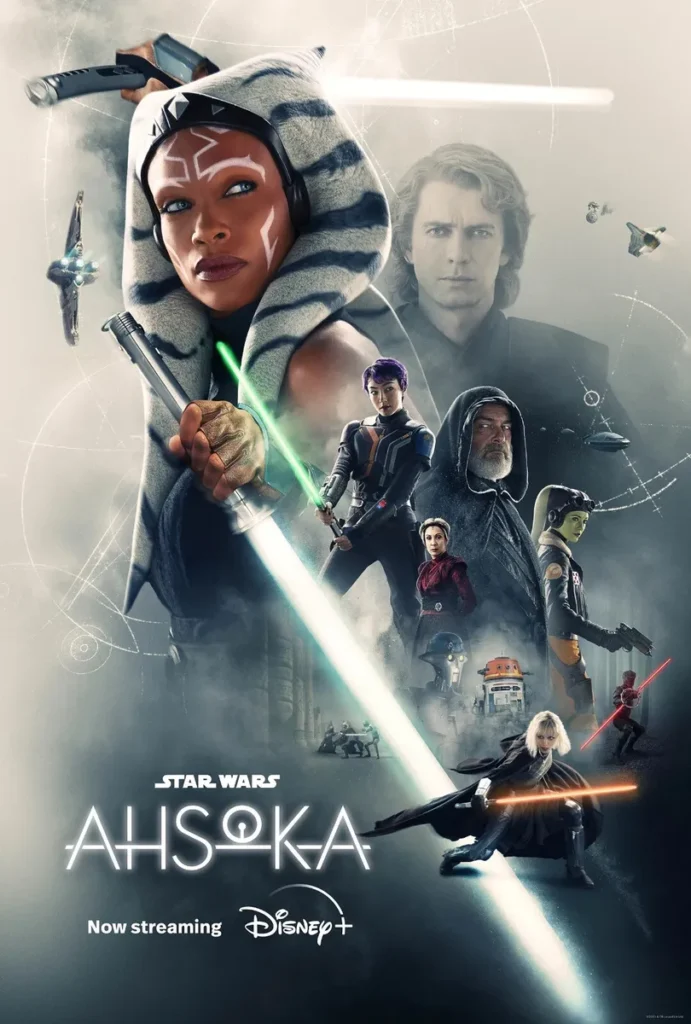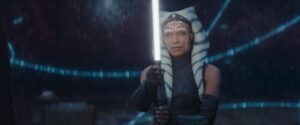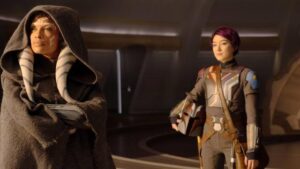Ahsoka Series Review – An Exciting Galactic Adventure
Ahsoka unveils a universe of excitement, delivering a steady narrative with sprinkles of brilliance, yet occasionally meandering in its cosmic scope, providing a solid but not stellar galactic escapade.

Ahsoka Series Review: A Journey Through the Stars
The Ahsoka series, the latest addition to the ever-expanding galaxy far, far away, offers fans a deeper dive into the beloved character of Ahsoka Tano. This series brings a blend of adventure, character development, and the rich lore that has always defined the franchise. This latest venture enriches the franchise’s tapestry with its adventurous spirit and thoughtful character arcs. It delves into Ahsoka’s complex psyche, unraveling layers of her past and aspirations, while also weaving in the rich, expansive lore that is a hallmark of the universe. This series not only pays homage to a beloved character but also expands the narrative horizons, offering both long-time followers and new fans a unique perspective on the galaxy’s intricate web of stories.
Ahsoka Tano: The Heart of the Series

Rosario Dawson’s portrayal of Ahsoka Tano truly stands as the centerpiece of the series. Her interpretation of the character is a masterclass in depth and versatility, capturing both the formidable warrior spirit and the profound emotional depth of Ahsoka. Transitioning a character from animation to live-action is no small feat, yet Dawson accomplishes this with a finesse that preserves the essence of Ahsoka’s character while adding new layers of complexity. Her performance captures the subtleties of Ahsoka’s growth, reflecting her journey from a determined Padawan under Anakin Skywalker to a more introspective and seasoned warrior. This journey, richly imbued with Dawson’s portrayal, explores Ahsoka’s internal struggles, her resilience, and her enduring commitment to her values.
The series also excels in its portrayal of Ahsoka’s relationships, particularly with Sabine Wren, played by Natasha Liu Bordizzo. Bordizzo’s Sabine is more than just a side character; she is a fully realized individual with her own set of motivations and complexities. The dynamic between Ahsoka and Sabine is one of the most engaging aspects of the series, offering a fresh perspective and new depth to the Star Wars narrative. Their interactions are not only captivating but also significant in driving the plot forward. Bordizzo brings a sense of authenticity to Sabine, making her a relatable and integral part of the story. Their partnership, grounded in mutual respect and shared experiences, adds an enriching dimension to the series, highlighting themes of friendship, loyalty, and the pursuit of a greater cause.
In essence, the interplay of Dawson’s Ahsoka and Bordizzo’s Sabine forms a narrative backbone for the series, providing both emotional resonance and compelling storytelling. It’s a partnership that not only deepens our understanding of each character but also enriches the broader Star Wars universe.
The Visual and Audio Palette of Ahsoka

The visual presentation of the “Ahsoka” series is a standout feature, making it a true visual spectacle within the Star Wars franchise. The series skillfully balances the aesthetic of the well-established universe with innovative new elements, creating a visual experience that is both familiar and refreshingly new. The fight scenes and lightsaber duels are choreographed with precision and fluidity, capturing the essence of classic Star Wars action while infusing it with a modern flair. These sequences are not just action-packed; they are also narratively significant, each duel and skirmish revealing more about the characters and their journeys.
The use of lighting and special effects in these scenes adds another layer of depth. The way light plays off the iconic white blades of Ahsoka’s lightsabers creates a visual poetry that is both stunning and meaningful. The meticulous attention to detail in these sequences pays off, as they stand out as some of the most memorable moments in the series.
Accompanying the visual brilliance is Kevin Kiner’s exceptional score. His music for the series is a homage to the legendary work of John Williams, yet it stands on its own with a unique voice. Kiner’s compositions elevate the emotional impact of key scenes, intertwining seamlessly with the narrative. The score echoes the themes of hope, struggle, and resilience that are central to the Star Wars saga, while also introducing new motifs that resonate with Ahsoka’s personal journey. The music plays a crucial role in building the atmosphere, whether in the heat of battle or during more introspective moments, adding a rich layer to the storytelling.
In essence, the visual and auditory elements of the “Ahsoka” series combine to create a captivating and immersive experience. The series not only pays respect to the legacy of Star Wars but also pushes the boundaries of what can be achieved in terms of storytelling through visuals and music.
Supporting Characters and New Worlds

Storytelling and Pacing

As a viewer, I found myself fully immersed in many parts of the story, drawn in by certain character arcs and the rich, emotional narrative. These moments of intense engagement were a testament to the series’ ability to capture the essence of the Star Wars universe, blending action with meaningful character exploration.
However, the series also had segments where the pacing felt uneven, leading to a sense of narrative imbalance. There were instances where the story seemed to stall, with certain scenes lingering longer than necessary, or the plot progression slowing to a point that affected the momentum of the episode. This inconsistent pacing occasionally disrupted the flow of the story, and at times, pulled me out of the immersive experience.
These slower segments often came in stark contrast to the more dynamic and action-packed scenes, making the pacing feel somewhat disjointed. While the intention might have been to allow for character development or to delve deeper into the narrative’s emotional aspects, the execution at times felt lacking in direction, leading to a feeling of narrative inertia.
Moreover, this uneven pacing sometimes impacted the development of new characters and subplots. With limited screen time, every moment counts, and the slower pacing in certain areas seemed to take away from opportunities to explore these new elements more fully.

